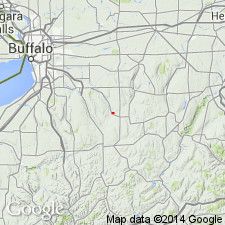
- Usage in publication:
-
- Java formation*
- Modifications:
-
- Named
- Dominant lithology:
-
- Shale
- Sandstone
- AAPG geologic province:
-
- Appalachian basin
Summary:
Named Java formation for cyclically deposited Upper Devonian rocks in western and central NY that have been described previously as Wiscoy sandstone and equivalent Hanover shale. Thicknesses are 94 ft at Silver Creek, 113 ft at Java, 165 ft at Wiscoy, 185 ft in western Steuben Co., and more than 200 ft in central and eastern Steuben Co. Recognizable from Silver Creek, Chautauqua Co., eastward for more that 120 mi across parts of Cattaraugus, Erie, Wyoming, Allegany, Ontario, and Steuben Cos. Comprises Pipe Creek shale, Hanover shale, and Wiscoy sandstone members. In western part of State, offshore shale and mudrock facies, Pipe Creek and Hanover members are dominant; in central part of State, near-shore siltstone and sandstone facies, Wiscoy sandstone, is dominant. The Java overlies the West Falls formation and underlies the Perrysburg formation. Unit is of Late Devonian age.
Source: GNU records (USGS DDS-6; Reston GNULEX).
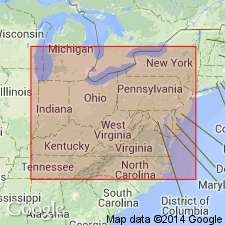
- Usage in publication:
-
- Java Formation*
- Modifications:
-
- Areal extent
- AAPG geologic province:
-
- Appalachian basin
Summary:
Java Formation (as its Pipe Creek Shale Member) extended from southwestern NY and western PA into eastern OH, western WV, eastern KY, western VA, and eastern TN.
Source: GNU records (USGS DDS-6; Reston GNULEX).
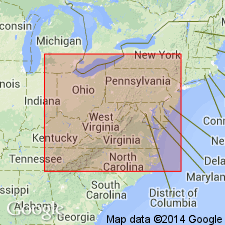
- Usage in publication:
-
- Java Formation*
- Modifications:
-
- Overview
- AAPG geologic province:
-
- Appalachian basin
Summary:
In outcrop in western NY, the Java consists of a basal black shale, the Pipe Creek Shale Member, and an overlying gray shale and mudrock with scattered beds of black shale and siltstone, and abundant limestone nodules, the Hanover Shale Member. The Pipe Creek thins to the east and feathers out in northern Stuben Co. The Hanover, however, thickens to the east and grades laterally into the Wiscoy Sandstone Member. The Pipe Creek rarely exceeds 25 ft in thickness, but makes up much of the radioactive black shale in the Java. In the subsurface, it extends south from western NY about 450 mi to Scott Co., VA. It thins to a featheredge in OH, KY, and TN. The Hanover is recognizable in the subsurface southward from western NY to eastern KY and adjacent southwestern VA and northeastern TN. Where the Pipe Creek pinches out, the Hanover cannot be separated from the Angola Shale Member of the West Falls Formation. The two grade westward into the upper part of the Olentangy Shale in central OH, and in central TN, the combined shales are equivalent to the upper unit of the Dowelltown Member of the Chattanooga Shale.
Source: GNU records (USGS DDS-6; Reston GNULEX).
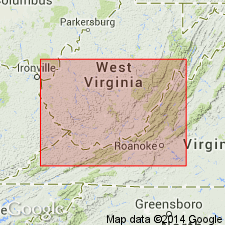
- Usage in publication:
-
- Java Shale Member
- Modifications:
-
- Revised
- AAPG geologic province:
-
- Appalachian basin
Summary:
Cross section between Norton and Asberrys, VA, in the Clinch Mountain outcrop belt shows more detailed divisions of Chattanooga Shale than previously indicated. Base of Chattanooga marked by Belpre Ash. Ascending, members are Rhinestreet Shale, Angola Shale, Java Shale (which contains the Center Hill Ash), Dunkirk Shale Tongue of Huron Shale Member and remaining upper part of Huron, Three Lick Bed, Cleveland Shale Member, and Sunbury Shale Member. According to authors, divisions are based on careful outcrop description and outcrop gamma-ray log. Divisions can be traced by borehole gamma-ray logs to their type areas in OH and NY.
Source: GNU records (USGS DDS-6; Reston GNULEX).
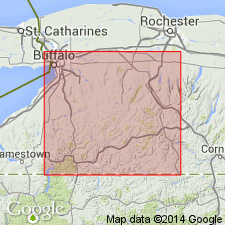
- Usage in publication:
-
- Java Formation*
- Modifications:
-
- Biostratigraphic dating
- AAPG geologic province:
-
- Appalachian basin
Summary:
Java Formation of West Falls Group. Includes (descending) Hanover Shale Member and Pipe Creek Shale Member. Overlies Angola Formation of West Falls Group; underlies Dunkirk Shale of Canadaway Group. Age is Late Devonian (late Frasnian to earliest Famennian; conodont biozones MN 12 to Middle TRIANGULARIS).
Source: Publication.
For more information, please contact Nancy Stamm, Geologic Names Committee Secretary.
Asterisk (*) indicates published by U.S. Geological Survey authors.
"No current usage" (†) implies that a name has been abandoned or has fallen into disuse. Former usage and, if known, replacement name given in parentheses ( ).
Slash (/) indicates name conflicts with nomenclatural guidelines (CSN, 1933; ACSN, 1961, 1970; NACSN, 1983, 2005, 2021). May be explained within brackets ([ ]).

